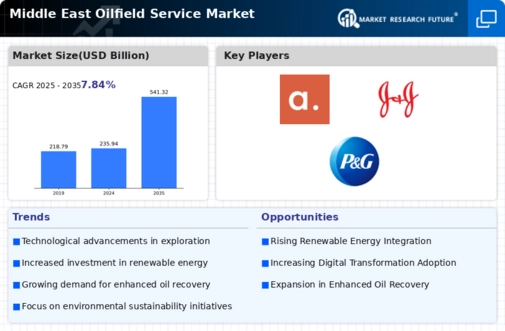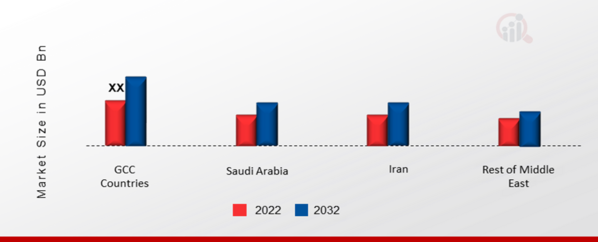Market Trends
Key Emerging Trends in the Middle East Oilfield Service Market
The Middle East oilfield service market is witnessing significant trends driven by various factors influencing the region's energy sector. As a key player in global oil production, the Middle East plays a crucial role in shaping market dynamics. One prominent trend is the increasing adoption of advanced technologies and digital solutions across the oil and gas value chain. Companies operating in the region are leveraging innovations such as artificial intelligence, data analytics, and automation to enhance efficiency, reduce costs, and optimize production processes.
Another notable trend is the growing emphasis on sustainability and environmental stewardship within the oil and gas industry. With mounting pressure to reduce carbon emissions and mitigate climate change impacts, Middle Eastern oilfield service providers are exploring cleaner energy alternatives and investing in eco-friendly practices. This includes initiatives to minimize flaring, improve water management, and integrate renewable energy sources into operations.
Moreover, geopolitical developments and regional tensions continue to shape market trends in the Middle East oilfield service sector. Uncertainties surrounding political stability, trade relations, and regional conflicts can impact investment decisions and project developments. Companies operating in the region must navigate these complex geopolitical dynamics to mitigate risks and seize opportunities for growth.
Furthermore, there is a growing focus on diversification and expansion beyond traditional oil and gas activities. Middle Eastern oilfield service companies are diversifying their portfolios by offering integrated solutions, including engineering, procurement, and construction (EPC) services, as well as maintenance, repair, and overhaul (MRO) services. This strategic shift allows companies to capture value across the entire energy value chain and capitalize on emerging opportunities in adjacent sectors such as renewables, petrochemicals, and infrastructure.
Additionally, market consolidation and strategic partnerships are shaping the competitive landscape of the Middle East oilfield service market. Companies are pursuing mergers, acquisitions, and joint ventures to strengthen their market position, enhance capabilities, and expand their geographic footprint. These collaborations enable firms to pool resources, share risks, and access new markets, ultimately driving greater efficiency and competitiveness.
Furthermore, regulatory reforms and policy initiatives are influencing market dynamics in the Middle East oilfield service sector. Governments in the region are implementing reforms to attract foreign investment, promote local content development, and enhance industry competitiveness. These regulatory changes create both opportunities and challenges for market participants, requiring them to adapt to evolving legal and compliance requirements while capitalizing on new business prospects.
The Middle East oilfield service market is experiencing dynamic trends driven by technological advancements, environmental considerations, geopolitical factors, diversification strategies, market consolidation, and regulatory reforms. Companies operating in the region must stay abreast of these trends and adapt their strategies to remain competitive in an ever-changing landscape. By embracing innovation, sustainability, collaboration, and regulatory compliance, oilfield service providers can navigate challenges and capitalize on opportunities for growth and prosperity in the Middle East market.







Leave a Comment